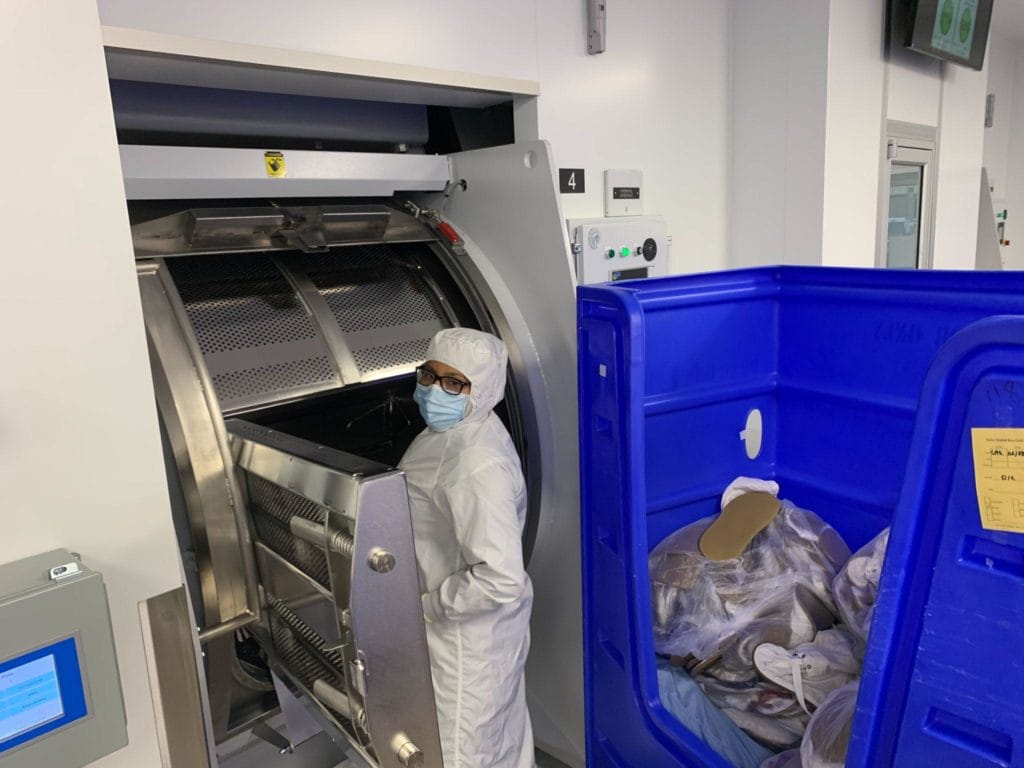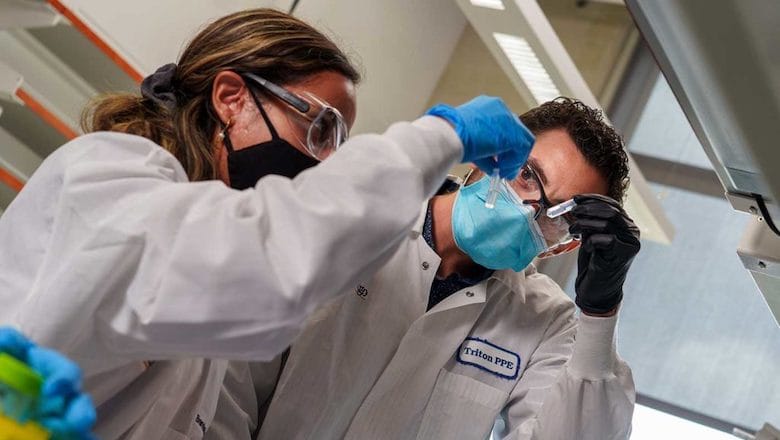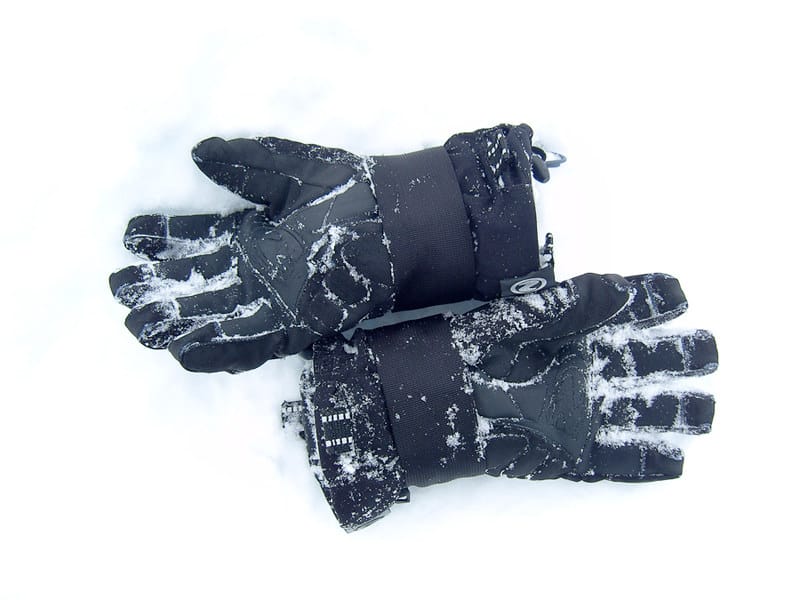
You’d never expect a glove to taint your product—but improper cleaning, storage, or disposal of PPE can turn protective equipment into a contamination vector. This expanded guide navigates the full lifecycle of reusable PPE—from laundering protocols and hygienic storage to disposal best practices—empowering procurement teams to maintain compliance, reduce risk, and optimize operations.
Reusable food PPE must undergo HACCP-compliant laundering—high-temperature sanitizing, segregated flows, sanitized storage, and traceable disposal. Adhering to these processes prevents contamination, supports third-party audits, and aligns with regulatory standards like FDA, BRCGS, and ISO 22000.
Deeper Real-World Facility Insights
Case #1: Dairy Plant’s Laundry Loop Contamination
A mid-sized dairy operation used shared launderers for staff uniforms and production PPE. Contamination from detergent residue led to microbial presence found in final-pack milk samples. The recall cost €400k. Only after implementing a separate return line for PPE and transferring to a HACCP-certified laundry service did contamination cease.
Case #2: Bakery’s Storage Mishap
In a bakery, clean aprons were stored in a humid backroom with poor ventilation. Within days, aprons developed mold and caused contamination of bread—batch was destroyed. Introduction of sealed lockers with desiccant packets and weekly inspections eliminated this issue and passed upcoming BRCGS audit with no findings.
Case #3: Poultry Processor’s Disposal Failure
A facility used open garbage bins for disposable gloves near production lines. Flies entered the open bins and spread to product surfaces. A client complaint followed. After switching to covered, labeled PPE waste bins removed daily, no further hygiene failures were recorded.
Case #4: Frozen Goods Warehouse—PPE Lifecycle Neglect
Workers wore freezer gloves repeatedly without laundering. Ice-gray discoloration and odor went unnoticed. Once staff reported skin irritation, testing revealed bacterial growth. Freezer gloves were retired, and replaced with a policy of liner gloves and weekly laundering—improvement immediate.
HACCP-Compliant Laundering Protocols
- Separation of Flows: Establish physically separate zones for dirty PPE intake and washed PPE distribution—no crossover.
- Validated Washing Cycle: Minimum 71 °C water temperature with proven sanitizers (e.g., quaternary ammonium, hydrogen peroxide).
- Food-Grade Detergents: Must be free from harmful residues or dyes that could transfer to PPE.
- Batch Documentation: Every load labeled with wash date, time, operator initials, and sanitization chemical logged.
- Periodic Verification: Swab-testing washed PPE for microbial load; corrective action if levels exceed thresholds.
Hygienic Storage Best Practices (Expanded)
- Clean Locker Systems: Lockers should be metal or plastic, ventilated, shielded from sun and moisture.
- Environmental Monitoring: Keep storage area humidity below 50%, temperature below 25 °C, and use weekly visual checks.
- Zone Labeling: Use colored labels or RFID tags to segregate PPE by department or risk zone.
- Inventory Rotation: Adopt FIFO to ensure older PPE is used or replaced, reducing degradation risks.
PPE Waste Management & Disposal (Detailed)
| Type of PPE | Disposal Method | Compliance Considerations |
|---|---|---|
| Single-use gloves/aprons | Labeled sealed bins, frequent removal | Follow local waste regulations—especially for allergens or biohazard |
| Reusable damaged items | Segregated rinse & discard pathway | Document disposal for audit trails |
| Chemical-contaminated PPE | Specialized hazardous disposal containers | Comply with chemical safety (CFR, EU CLP) |
| General used PPE | Labelled, daily collection bins | Prevent overflow contamination |
Note: For allergen zones, used PPE should be double-bagged and corralled separately before disposal.
Expanded Table: Full PPE Lifecycle Reference
| Stage | Step-by-Step Actions (Best Practice) | Risk Mitigated |
|---|---|---|
| Laundering | Segregated workflow, 71 °C cycle, sanitization logs, swab test controls | Residual contamination, audit failure |
| Storage | Clean ventilation lockers, weekly checks for mold, environmental control | Mold growth, microbial cross-contamination |
| Rotation | FIFO tracking, tagged bins, discard on linings exceeding wash cycles | Degraded PPE posing safety risk |
| Disposal | Sealed labeled bins, compliance waste segregation, removal SOPs | Cross-contamination and regulatory violations |
Common Failures and Smart Fixes
| Failure Scenario | Smart Solution |
|---|---|
| PPE stored in humid backrooms | Install low-humidity lockers with ventilation and dehumidifier |
| Laundering leftover detergent residue | Validate detergents with residue-free certification |
| No audit evidence for PPE lifecycle management | Use digital logs and barcodes for every batch |
| Cross-contamination via dirty laundry machines | Implement HACCP-certified laundering partner |
| No isotope discounts or scheduled refresh policy | Set refresh thresholds (e.g., retire suits every 18 months) |
Buyer’s FAQ (Expanded – 12 Key Questions)
-
When is outsourcing laundry mandatory?
If you lack validated, separated wash lines and documentation—outsourcing is safer. -
Optimal laundry cycle length and temperature?
Achieve ≥71 °C for at least 10-minute rinse cycle. -
Frequency for PPE inspection?
Clean PPE: Weekly. Damaged or contaminated: Immediately. -
Reuse factor for caps and aprons?
Up to 50 high-quality wash cycles if stored and washed per protocol. -
Handling allergen PPE?
Single-use only; double-PPE disposal post-use. -
Can employees launder PPE at home?
Never. Home laundering lacks traceability and proper sanitization. -
Handling frozen PPE?
Thaw fully before laundering to avoid microbial pockets in ice. -
Documenting old PPE disposal?
QR-labelling and disposal logs are essential for compliance. -
Eco-friendly laundry options?
Low-temperature ozone or UV systems—validate against kill rates. -
Mixed-use bins OK?
Only if packed in sealed bags and documented—no lumps. -
How to pass surprise audits?
Have digital PPE lifecycle logs, sanitization reports, and disposal evidence. -
Cost-saving without compromising hygiene?
Combine reusable items in low-risk zones and disposables in high-risk zones, tracked by cost-per-wear metrics.
Strategic Procurement Checklist
- [ ] Map PPE usage by zone (HACCP hazardous vs low-risk)
- [ ] Define laundering workflows and SOPs
- [ ] Select certified HACCP or ISO-compliant laundry services
- [ ] Label and rotate PPE stock via FIFO with logging
- [ ] Tailor disposal procedures (labeling, frequency, waste authority compliance)
- [ ] Schedule training session on PPE hygiene lifecycle for staff
Conclusion
The PPE lifecycle—laundry, storage, and disposal—is the hidden backbone of food safety. Well-managed systems not only pass audits but safeguard trust, reduce contamination risk, and protect brand value.
If you’d like ready-made SOPs, audit templates, or laundry partners vetted for food-grade compliance, I’m here to help.
📩 Contact: [email protected]
🌐 Website: www.workwearsolutions.net
Zion Zhang
Recent Posts
 Color-Coded PPE Systems: Preventing Cross-Contamination in Food Facilities2025年8月7日Cross‑contamination spreads through cuts, allergens—and […]
Color-Coded PPE Systems: Preventing Cross-Contamination in Food Facilities2025年8月7日Cross‑contamination spreads through cuts, allergens—and […] Hairnets, Beard Covers, and Bouffant Caps: Managing Contamination Risk Above the Shoulders2025年8月7日Even the smallest strand of hair or skin particle can […]
Hairnets, Beard Covers, and Bouffant Caps: Managing Contamination Risk Above the Shoulders2025年8月7日Even the smallest strand of hair or skin particle can […] Choosing the Right Gloves for Food Processing: Cut, Grip, and Hygiene2025年8月7日In food processing, gloves are more than hygiene […]
Choosing the Right Gloves for Food Processing: Cut, Grip, and Hygiene2025年8月7日In food processing, gloves are more than hygiene […] Disposable vs Reusable Food PPE: Which Is Right for Your Operation?2025年8月7日Choosing the wrong type of PPE in food processing […]
Disposable vs Reusable Food PPE: Which Is Right for Your Operation?2025年8月7日Choosing the wrong type of PPE in food processing […] Introduction to Food Industry PPE: Hygiene, Safety, and Compliance2025年8月7日Introduction to Food Industry PPE: Hygiene, Safety, and […]
Introduction to Food Industry PPE: Hygiene, Safety, and Compliance2025年8月7日Introduction to Food Industry PPE: Hygiene, Safety, and […] Hi-Vis Winter Gloves: Extreme Cold, Visibility, and Compliance for Arctic Worksites2025年8月5日Working in Arctic or sub-zero conditions is not just […]
Hi-Vis Winter Gloves: Extreme Cold, Visibility, and Compliance for Arctic Worksites2025年8月5日Working in Arctic or sub-zero conditions is not just […]
CONTACT US
- Feel free to contact us any time. We will get back to you as soon as we can!
- +86-17330061805
